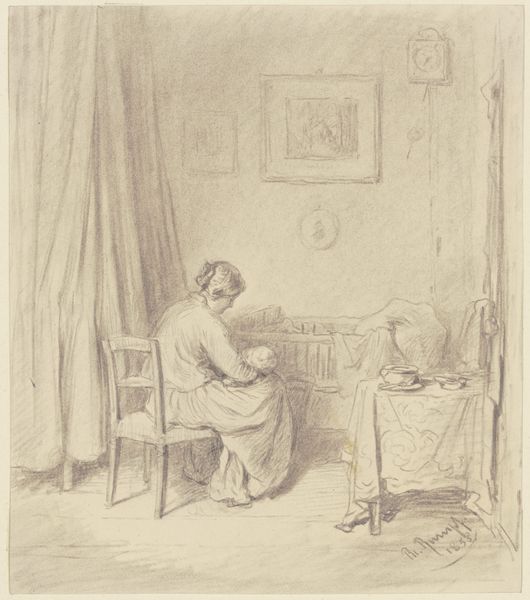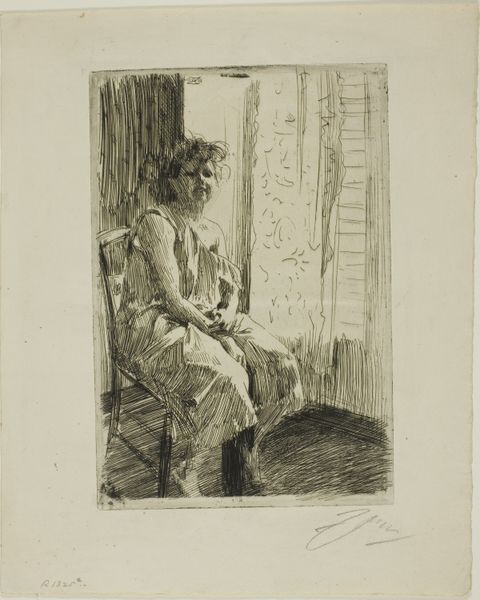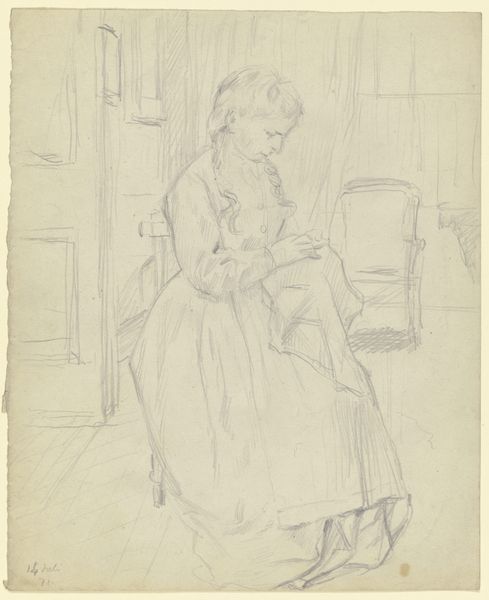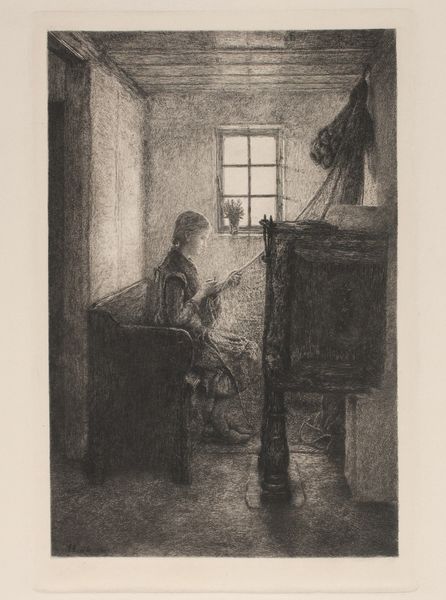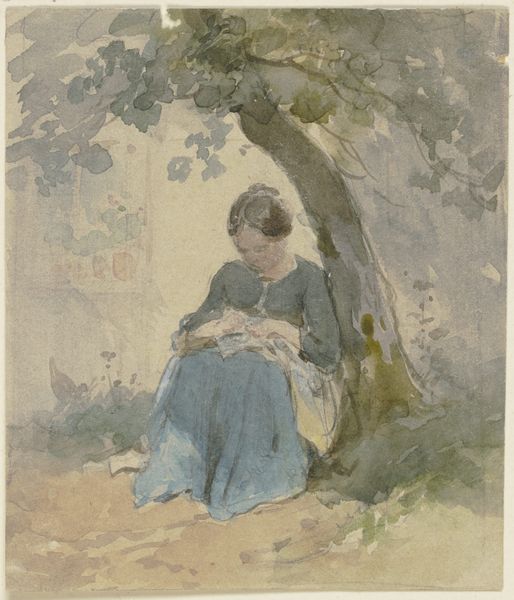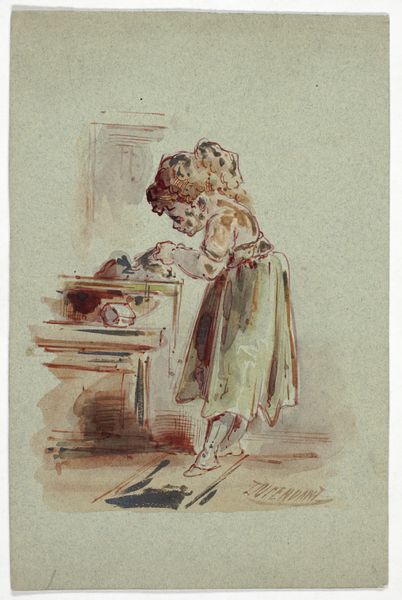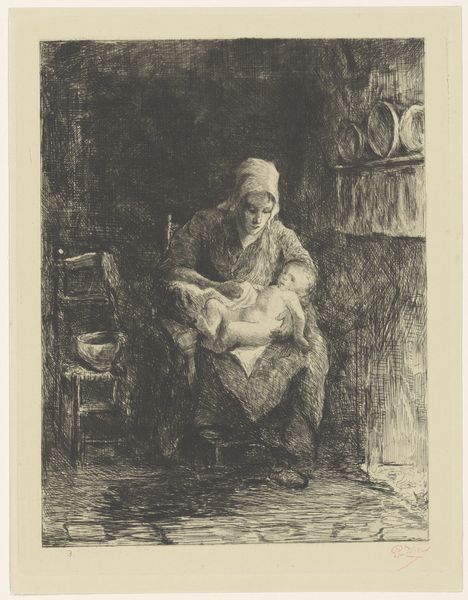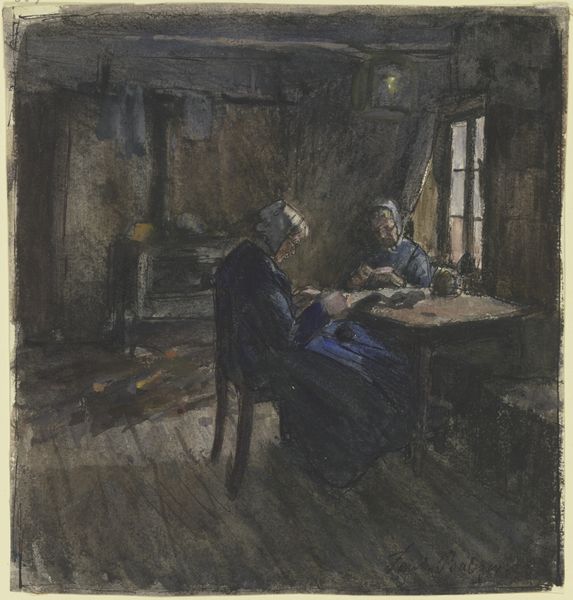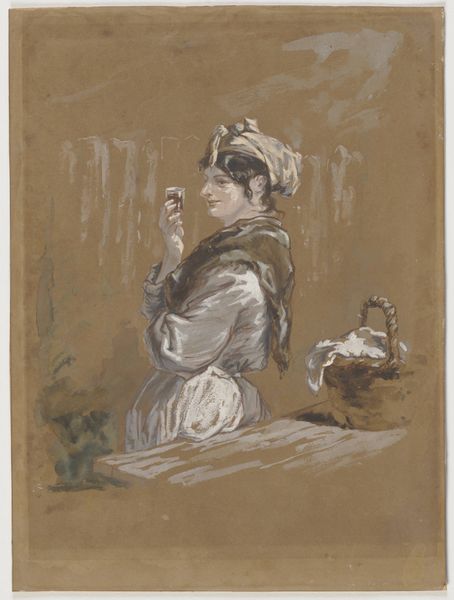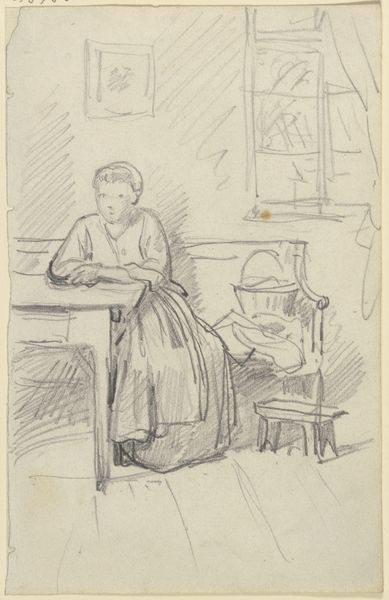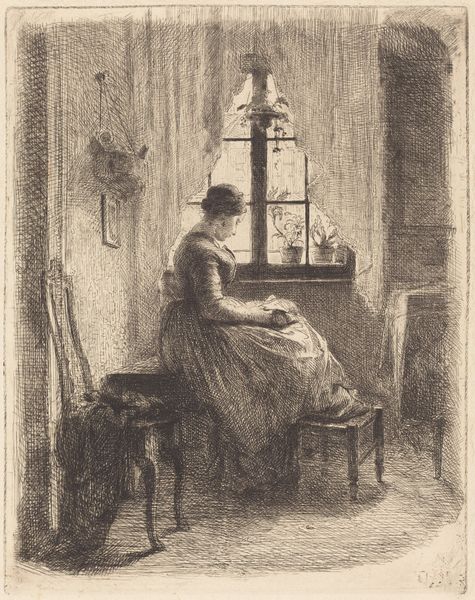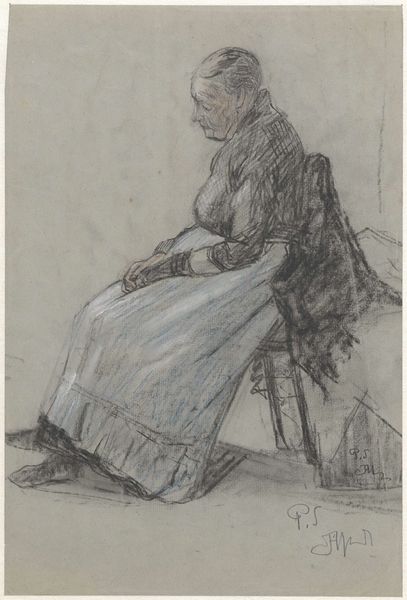
painting, watercolor
#
portrait
#
painting
#
charcoal drawing
#
watercolor
#
coloured pencil
#
genre-painting
#
watercolor
#
realism
Dimensions: height 414 mm, width 304 mm
Copyright: Rijks Museum: Open Domain
Editor: This is Jozef Israëls' "Het naaistertje," or "The Little Seamstress," painted around 1880, using watercolor and other media. There's a quiet solemnity about this young girl diligently sewing by the window. How do we read this image through a contemporary lens? Curator: It’s a powerful piece, especially when considering its context. Israëls, working in the late 19th century, was deeply interested in representing the lives of the working class. But look closer—whose story isn't being told? Where are the voices of these working women in art history beyond these depictions? This wasn't simply about aesthetic representation, but about raising questions about social structures. What do you make of her positioning near the window? Editor: I guess it's symbolic, right? She's by the only source of light. Maybe suggesting limited opportunities, and being trapped by her social role? Curator: Precisely. Now, consider how this image intersects with debates about child labor and the limited agency afforded to young girls during this period. Can we view it as a subtle commentary on these societal constraints? Does the work challenge or perpetuate existing power structures? Editor: I see what you mean. It makes you wonder about the labor that’s usually unseen or ignored, and whose stories never get told or become normalized. Curator: Exactly! It pushes us to consider how representations like this – while seemingly benign – actively participate in broader societal narratives. It shows the intersection of gender, class, and the historical power dynamics that still resonate today. What do you think about art’s role in helping rewrite or revision such history? Editor: I think the act of close-looking we just did hopefully inspires others to think more critically. It helps unpack those complexities. Curator: Agreed. By deconstructing the historical and cultural narratives surrounding artworks like this one, we can foster a more nuanced understanding of art and its impact on society. Editor: Absolutely, thank you for shedding light on the activist interpretation. It's a perspective that will change how I approach art going forward.
Comments
No comments
Be the first to comment and join the conversation on the ultimate creative platform.
